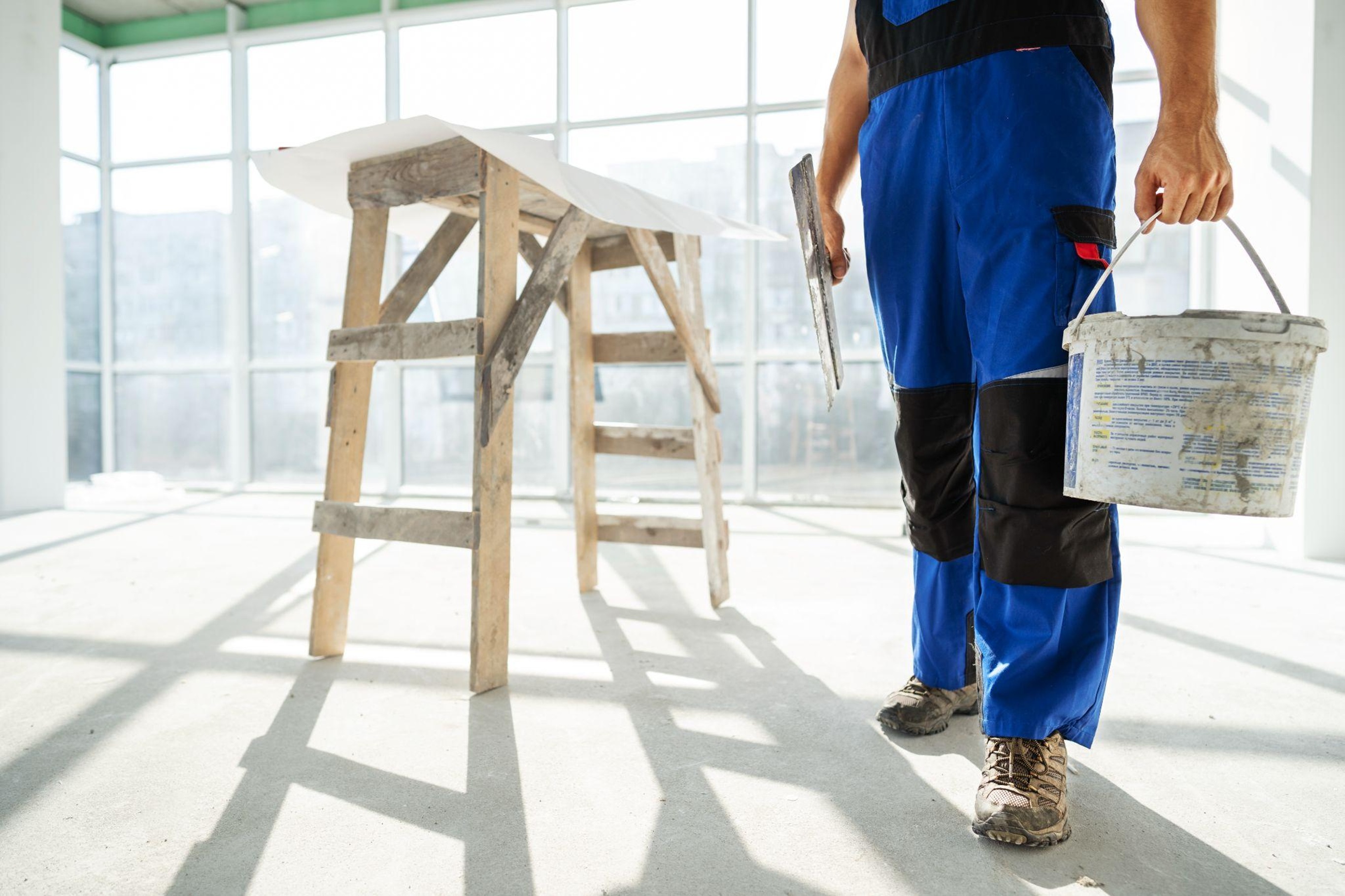
A fresh coat of paint can do wonders for maintaining or increasing the value of your property. If you're a homeowner looking to boost curb appeal, a landlord preparing for new tenants, or a potential buyer evaluating the condition of a property, painting plays a substantial role. However, understanding the costs associated with painting a house can feel overwhelming. From labor expenses to material costs, multiple factors influence the final price tag.
HomeRiver Group is a leader in property management, offering unmatched expertise to maximize your property’s potential. With cutting-edge technology, personalized strategies, and a nationwide presence, we simplify generating income from your property. Knowing how much it costs to paint a house can help you budget effectively to enhance your home’s appeal and value. Trust our proven track record and dedicated support to help you achieve financial growth effortlessly and stress-free.
In this article, we will examine the fundamental factors influencing painting costs, compare DIY and professional options, and provide actionable tips to help you budget effectively to enhance your property’s appeal and value.
Factors Affecting The Cost Of Painting A House
When determining how much it costs to paint a house, several factors can significantly impact the total expense. Understanding these variables can help you better assess your budget and make informed decisions about your property.
Below, we’ll explore the essential elements that influence the cost of painting a house:
The square footage of your house is one of the most significant factors in determining painting costs. Larger homes require more paint, labor, and time, directly increasing the overall cost. For instance, painting a 1,500-square-foot home will typically cost less than painting a 3,000-square-foot home, all else equal.
Painting the inside of your home typically incurs different costs than painting the exterior. Exterior surfaces often require special weather-resistant paints and more preparation (like pressure washing or repair work) to withstand the elements. As a result, painting the exterior can often be more labor-intensive and expensive than painting interior spaces.
If your walls or exterior surfaces are in poor condition, further prep work such as cleaning, patching, sanding, or priming may be required before painting can begin. This extra labor contributes to the overall cost. Moreover, older homes may require lead paint testing, which can add to the expense.
Not all paints are created equal. Choosing high-quality paint for your home can increase the upfront cost but often results in a more durable and long-lasting finish. Conversely, opting for budget paint may save money in the short term but might lead to more frequent repainting. The type of paint finish (satin, matte, semi-gloss, etc.) can also affect cost variations.
Labor often constitutes a significant portion of painting expenses. Rates can vary depending on your location, the required experience, and the job's complexity. For example, multi-story homes or homes with detailed architectural details may require extra scaffolding, equipment, or precision, driving up labor costs.
The cost of painting a house can also depend on your geographic location. Labor costs, materials, and general living costs in your area will influence pricing. Expect to pay more in urban regions or high-demand markets compared to more rural areas.
If your home has decorative trim, doors, shutters, or other features that need to be painted, these can add to your total expenses. Detailed work requires extra effort and increases both material and labor costs.
The time of year can also affect the cost of painting a house. Many professional painters have busy seasons (spring and summer, for instance), which could lead to higher rates due to demand. Scheduling your painting job during the off-season might help you save money.
Interior Painting Costs Vs. Exterior Painting Costs
When painting your home, the costs can vary significantly depending on whether you tackle the interior or exterior. Each type of project brings considerations that affect the overall price, from preparation work to the type of paint required.
Interior Painting Costs
Interior painting projects are often more controlled because they don’t face the unpredictable effects of outdoor weather. On average, interior painting costs range between $1 to $3 per square foot, depending on room size, number of rooms, and the choice of paint.
Here’s a breakdown of common cost factors for interior painting:
Wall Height & Space Complexity: Painting spaces with high ceilings or intricate layouts may add to labor costs.
Surface Preparation: These preparatory steps can raise expenses if walls require patching or priming.
Paint Quality: High-end paints with richer pigments and durability typically cost more upfront but may save money long-term by lasting longer.
Extra Features: Trim work, baseboards, and decorative accent walls can increase pricing as they require extra detailing.
Exterior Painting Costs
On the other hand, exterior painting projects can be more labor-intensive due to the need for weatherproofing and addressing environmental factors. The average cost typically falls between $1.50 and $4, but this can rise depending on home size and surface type.
Factors that influence exterior painting costs include:
Surface Material: If you’re painting wood, stucco, brick, or vinyl, each material requires differing specialized paints and techniques.
Height Of The Home: Multi-story homes are more expensive to paint due to more labor and safety equipment.
Climate & Weather Conditions: In areas with extreme conditions, the need for weatherproofing compounds like sealants or primers can increase costs.
Maintenance & Repairs: Pre-painting repairs, such as fixing damaged siding, can significantly impact pricing.
Average Cost To Paint A House By Square Footage
When calculating how much it costs to paint a house, one of the most significant factors to consider is the size of the property. Costs are typically calculated by square footage, as a larger surface area will naturally require more paint, materials, and labor.
Below is a breakdown of average pricing by square footage to help you estimate your budget:
1,000 Square Feet
For smaller homes or apartments averaging 1,000 square feet, you can expect to pay between $1,000 and $6,000 for professional painting services. This estimate includes prep work, two coats of paint, and labor costs. If you paint both the interior and exterior, this figure may increase.
2,000 Square Feet
Painting a home around 2,000 square feet will generally cost between $4,000 and $12,000. The cost varies depending on the paint type, the project's elaborateness, and whether the property has multiple stories or unique architectural features that demand more labor.
3,000 Square Feet Or Larger
For larger properties measuring 3,000 square feet or more, the cost to paint can range from $6,000 to $18,000. The more detailed the design or higher the ceilings, the more you’ll need to budget for added time and resources.
Additional Costs: Trim, Ceilings, And Accents
When planning a house painting project, it's important to consider how the trim, ceilings, and decorative accents can influence the overall cost. While walls often account for the bulk of the painting expenses, these extra elements can add a significant layer of difficulty—and cost—to the budget.
Trim And Baseboards
Painting trim and baseboards requires precision and detailed work, often involving smaller brushes and specialized techniques. The price can vary depending on the elaborateness of the molding or if the painter needs to perform further prep work, such as sanding or priming.
Ceilings
Painting ceilings is another expense, especially if you opt for a color change or are trying to cover stains. High or vaulted ceilings may increase costs due to the added effort and equipment needed, such as scaffolding or ladders.
Decorative Accents And Unique Features
If your home includes crown molding, wainscoting, or built-in shelving, these require a more meticulous painting approach. Specialty finishes like high-gloss paint or accent colors can also elevate the price.
Why These Costs Matter For Renters And Buyers
Both renters and potential buyers should pay close attention to these ancillary elements when calculating the total investment in a property. A well-painted trim, ceiling, and accents can significantly enhance a home's appearance and resale value. At HomeRiver Group, we understand the importance of these finishing touches when managing and preparing properties for rental or sale. From staging to upkeep, these details contribute to our exceptional service and help you rent out your house successfully.
Tips To Reduce The Cost Of Painting Your House
Painting your house is an investment, but several strategies exist to reduce costs without compromising quality.
If you are painting the interior, exterior, or both, these practical tips can help you stay within budget:
Plan Ahead & Budget Wisely: Evaluate your painting needs and consult with professionals or suppliers to estimate costs accurately. Planning allows you to shop for the best paint and materials deals, avoiding expensive last-minute purchases.
Choose Quality Paint For Long-Term Savings: While it may be tempting to choose inexpensive paint, low-quality options often require more coats to achieve proper coverage and may need repainting sooner. Invest in durable, high-quality paint to reduce future expenses.
Do Some Prep Work Yourself: Preparing your home for painting can significantly reduce labor costs. Tasks like cleaning surfaces, repairing small cracks or holes, and protecting furniture are often simple enough to handle independently.
Consider Partial Painting: If your goal is a refreshed look on a budget, focus on high-impact areas. For example, repaint the trim, doors, or high-traffic rooms instead of the entire house.
Hire Professional Painters Strategically: While DIY painting is an option, hiring experienced professionals can save time and lower the risk of costly mistakes. Seek multiple quotes, ask for references, and aim to schedule the job during off-peak seasons when rates may be lower.
Final Thoughts
Painting your house is one of the most effective ways to enhance its appearance, protect it from the elements, and increase its overall value. While the cost of painting a house can vary significantly based on factors like size, paint quality, labor, and prep work, understanding these variables helps you plan your budget effectively and avoid surprises.
At HomeRiver Group, we understand the importance of maintaining and enhancing your property. As the nation’s premier property management company, we pride ourselves on delivering exceptional service with local experience. If you’re looking for ways to increase your property’s value through maintenance and upgrades, our team is here to provide experienced guidance and comprehensive support.
Your property is our priority, and we’re dedicated to helping you make informed decisions that align with your goals.
Read also:
What Does CAM Stand For In Property Management? Understanding Common Area Maintenance Fees
How Does Property Management Work? An Overview For Property Owners
Frequently Asked Questions About How Much Does It Cost To Paint A House
How much does it typically cost to paint the exterior of a house?
On average, exterior house painting will cost about $3,000, but the price can range between $1,900 and $6,900, depending on factors such as the house's size, the type of paint used, and the amount of prep work required. Larger homes or those with elaborate designs may fall on the higher end of the spectrum.
What is the average cost per square foot for interior painting?
The average cost of interior painting is $2.75 per square foot. This figure can vary depending on the quality of the paint, the condition of the walls, and whether any minor repairs are needed before the painting begins.
Does the type of paint used influence the overall cost?
Yes, the type and quality of paint can significantly affect the overall cost. High-end paints with durability, stain resistance, or low VOCs (volatile organic compounds) tend to be more expensive but may save money in the long run by lasting longer and requiring fewer coats.
How do labor costs impact the total price of painting a house?
Labor costs account for a significant portion of painting expenses, often making up 50%-60% of the total price. Experienced painters generally charge higher rates, but their skill assures a cleaner, more professional finish. Labor costs may also increase if additional work, such as repairing damaged surfaces or dealing with difficult-to-reach areas, is required.
Will painting a two-story house be more expensive than a one-story house?
Yes, painting a two-story house is generally more expensive than painting a one-story house due to the extra time, effort, and equipment (like scaffolding or ladders) required to reach higher areas. On average, homeowners can expect to pay 25% to 50% more for a two-story structure compared to a single-story home of similar size.
How much should I pay to paint a house with multiple rooms?
The cost to paint a house with multiple rooms varies based on the total square footage, the number of coats required, and the job's elaborateness. On average, you can expect to pay between $600 - $1,240 per room, with larger or more intricate rooms falling on the higher end.










